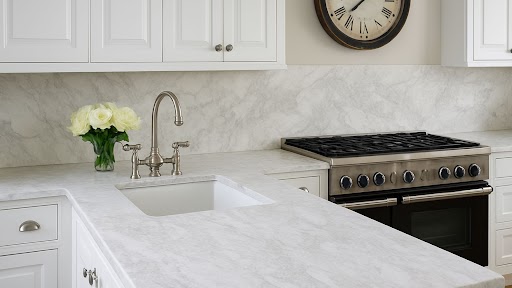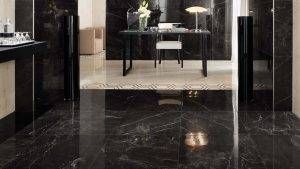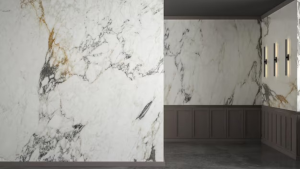Marble brings elegance and class to homes, whether in kitchens, bathrooms, or dining spaces. However, its beauty often comes with a challenge—it can get scratched, etched, or stained easily. Many homeowners ask the same question: how to get rid of marks on marble without damaging the surface?
The answer is simple: by using gentle cleaners, the right techniques, and preventive measures, you can remove marks and restore marble’s shine. In this guide, we’ll cover everything from removing stains and scratches to polishing marble and keeping it spotless for years.
Why Does Marble Get Marks So Easily?
Marble is a natural stone made mostly of calcium carbonate. This makes it porous and soft, so it easily absorbs spills and gets scratched or etched by acidic substances.
The most common causes of marks on marble include:
- Spilt coffee, wine, or juice
- Oil or grease stains
- Rust from metal objects
- Water spots from hard water
- Acid etching from vinegar, lemon, or cleaners
- Every day wear like scratches and dull spots
Knowing the cause of the mark helps you find the right solution.
Types of Marks Found on Marble
- Stains: From oils, food, or liquids.
- Etching: Dull white spots caused by acids.
- Scratches: From knives, sharp objects, or rough scrubbing.
- Water Marks: Cloudy spots from water buildup.
- Rust Marks: From prolonged contact with metal.
Each type requires a specific cleaning method.
How to Get Rid of Stains on Marble
Oil Stains
- Mix baking soda and water into a paste.
- Apply it to the stain and cover with plastic wrap.
- Leave overnight and wipe clean.
Food and Drink Stains
- Use hydrogen peroxide with a few drops of ammonia.
- Apply gently with a cloth, rinse, and dry.
Rust Stains
- Use a marble-safe rust remover.
- Never use bleach—it damages marble.
For more on stain removal, see our guide on how to clean a marble countertop for step-by-step instructions.
How to Remove Acid Marks (Etching)
Acid marks look dull or white compared to the rest of the surface. If you’ve spilt vinegar, lemon juice, or wine, you may need to learn how to remove acid stains properly.
Steps:
- Dampen the affected area slightly.
- Apply a marble polishing powder or paste.
- Rub gently in circular motions with a soft cloth.
- Rinse with water and dry.
For deep etching, professional polishing may be needed.
How to Get Rid of Scratches on Marble
Scratches are common in kitchens where knives, pans, or sharp objects touch marble.
For light scratches:
- Use fine-grit sandpaper or marble polishing powder.
- Rub gently until the scratch blends in.
For deep scratches:
- Professional refinishing may be required.
Always use cutting boards to prevent scratches.
How to Remove Water Marks from Marble
Water spots are usually caused by hard water.
- Spray a little water on the area.
- Rub gently with a microfiber cloth.
- Use a marble-safe cleaner if needed.
Prevention tip: Always dry marble after cleaning.
How to Remove Rust Marks from Marble
Rust marks appear when metal sits on marble for too long.
Solution:
- Use a marble-safe rust remover.
- Apply as per instructions.
- Rinse and dry immediately.
DIY Poultice for Tough Marks
A poultice helps remove deep stains and marks.
How to make it:
- Mix baking soda with water to form a thick paste.
- Apply to the stain.
- Cover with plastic wrap.
- Leave for 24–48 hours.
- Wipe clean and rinse.
This works well for oil, food, and wine stains.
How to Clean Marble Table vs Countertops
While the cleaning process is similar, marble tables need more care since they are used for dining.
- Always use placemats to prevent stains.
- Wipe spills immediately.
- Use coasters to avoid water rings.
If you need detailed guidance, check out our article on how to clean a marble table for easy tips.
Sealing Marble to Prevent Marks
One of the best ways to protect marble is by sealing it regularly.
Steps:
- Clean the marble thoroughly.
- Apply a marble sealer evenly.
- Let it absorb for 15 minutes.
- Wipe off extra sealer.
- Repeat once or twice a year.
Sealing helps reduce stains, etching, and water marks.
Mistakes to Avoid When Cleaning Marble
- Don’t use vinegar or lemon cleaners.
- Don’t use steel wool or rough pads.
- Don’t ignore spills.
- Don’t forget to reseal.
These mistakes can make marks worse instead of removing them.
Professional Help for Stubborn Marks
If marks don’t go away with home methods, hire professionals. They can polish, grind, or seal marble to restore its natural shine. If you’re choosing marble for new spaces, always buy from a Top marble supplier to ensure you get high-quality stone that better resists damage.
Tips for Keeping Marble Mark-Free
- Use coasters and mats.
- Clean spills right away
- Never cut directly on marble.
- Seal marble regularly.
- Use gentle cleaners only.
With these habits, your marble will stay beautiful for decades.
Conclusion
Marble is elegant, but it needs gentle care to stay spotless. By acting quickly, using the right methods, and avoiding harsh cleaners, you can easily learn how to get rid of marks on marble and restore its shine. From removing oil and food stains to polishing away scratches and sealing surfaces for long-term protection, each step keeps your marble looking beautiful.
With regular cleaning habits and proper sealing, you can protect your investment for years. Treat your marble with care, and it will remain a timeless feature in your home.
Frequently Asked Questions
What is the best way to get rid of stains on marble?
Use a baking soda poultice for oil stains and hydrogen peroxide for food stains. Always rinse and dry after cleaning.
How do I fix acid marks on marble?
Use a marble polishing powder to gently buff the etched area. For deep acid damage, professional polishing may be required.
Can scratches on marble be removed at home?
Light scratches can be polished with fine sandpaper or powder. Deep scratches need expert refinishing.
Should I seal marble to prevent marks?
Yes, sealing creates a protective layer that reduces stains, scratches, and water spots. Reapply every 6–12 months.
What cleaners should I avoid on marble?
Avoid vinegar, bleach, and acidic cleaners. Always use pH-neutral soap or marble-safe products.






